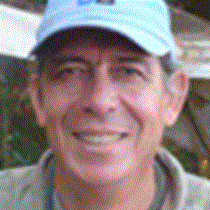Osa Peninsula, Corcovado National Park, Costa Rica
“Today is our rainforest day”, our Expedition Leader told us. We were excited to explore the Osa Peninsula as we have heard so many great things about it. It is one of the best-preserved rainforests in this part of the world and we could hardly wait. Right after breakfast, we disembarked the National Geographic Sea Lion for our morning activities at Caletas, an area set apart for conservation. By the time we went back for lunch on the National Geographic Sea Lion, we had seen some of the most amazing wildlife in the rainforest: scarlet macaws, spider monkeys, sloths and a large number of tropical birds. All of these sightings took place in less than two hours of nature walks. Some of our guests also went horseback riding through the forest and along the pristine beach of the Peninsula.
The tropical wet forest on the Osa Peninsula is widely considered the most species-rich in Central America. Species found here that are critically endangered or absent in the rest of the country included jaguar, American crocodile, scarlet macaw, spectacled caiman and Baird’s tapir. Harpy eagles, which are thought to no longer be a permanent resident in the country, have been sighted on several occasions.
After lunch, the National Geographic Sea Lion cruised forty minutes south and dropped anchor in front of the well-known Corcovado National Park. In the afternoon, we had several options to choose from. Some of the guests took the waterfall trail, a short trail that leads up a nameless creek that begins just behind the ranger station. They saw quite a few cycad plants along the banks, in what looked like healthy populations of these “living fossil” plants. The trail ended at a lovely waterfall. Later on, this group went swimming in a river pool. It was one of the highlights of the day! Taking a dip and cooling off in the middle of the rainforest was a remarkable moment. As we were getting ready to board our Zodiac and head back to the National Geographic Sea Lion, a seven-foot crocodile was spotted about sixty feet away from the beach, swimming right in front of us.
Back on the ship, we had a hot shower and enjoyed our cocktail hour. After, we heard from our Naturalists about the complex ecological relationships within tropical wildlife, due to millions of years of evolution. The weather could not have been better for our nature walks. The day ended with a nice sunset. In just one day of nature exploration, we were able to understand why this part of Costa Rica is known as one the most intense biological areas of the tropics. We are now ready to continue cruising south.




